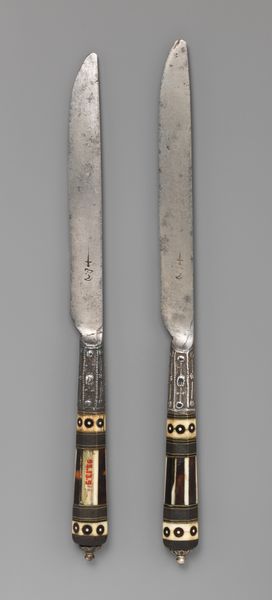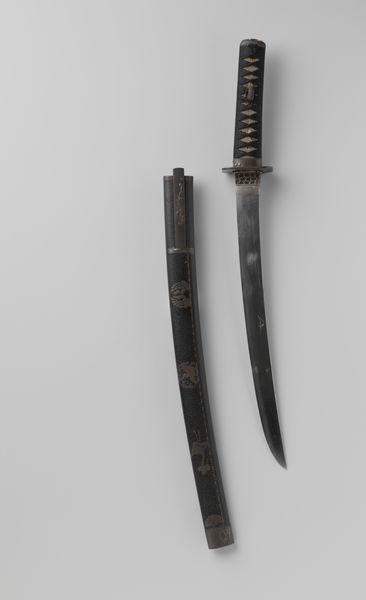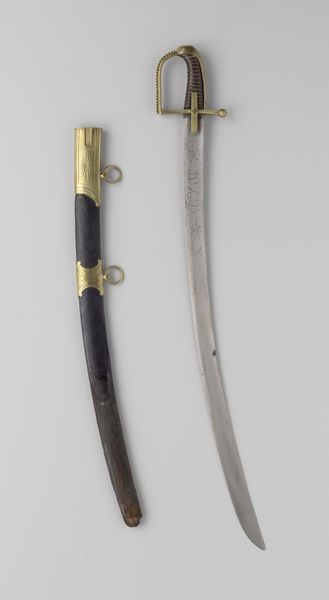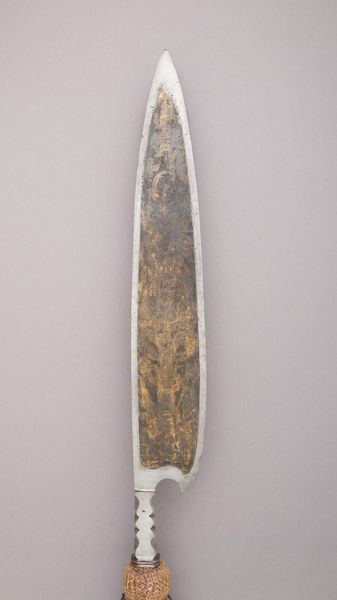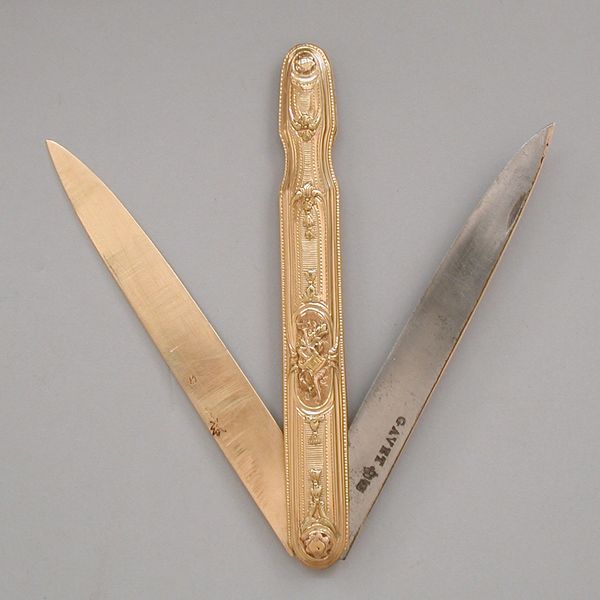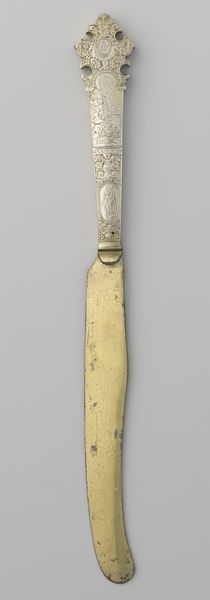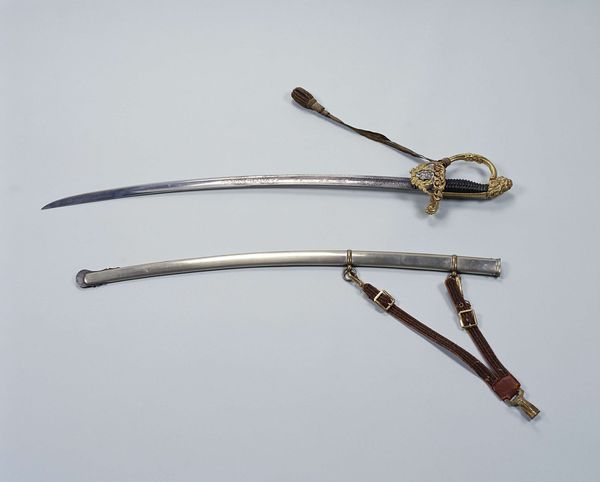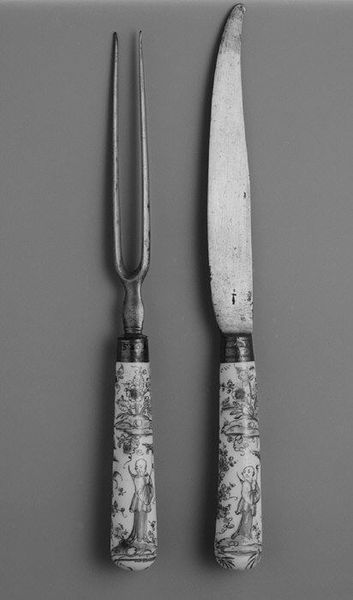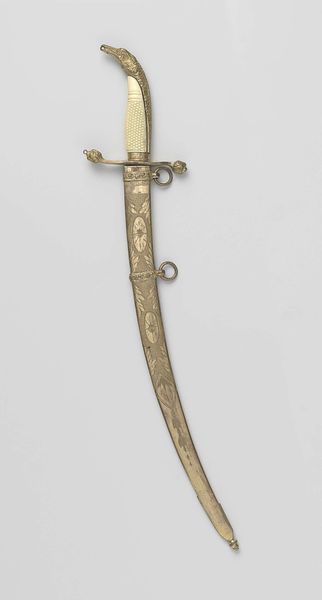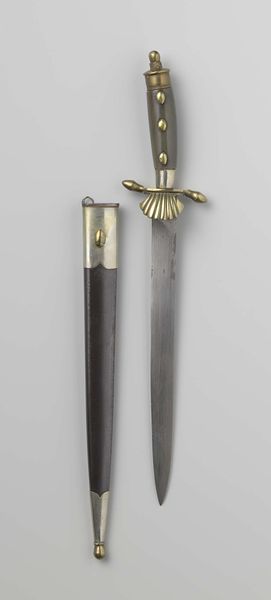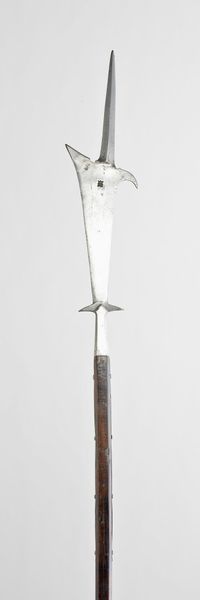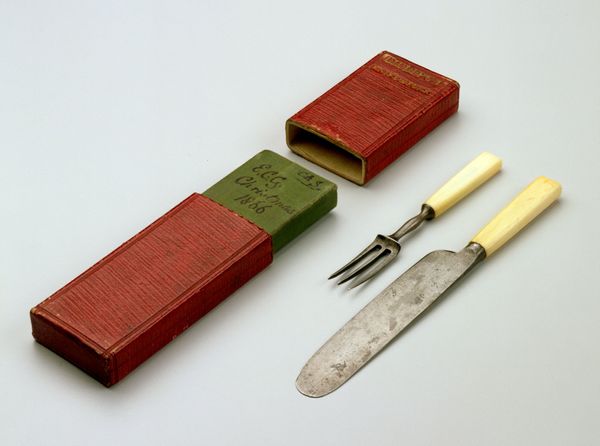
Hunting Trousse (Waidpraxe) with the Coat of Arms and Initials of Christian II, Elector of Saxony 1609
0:00
0:00
carving, metal, sculpture, ivory
#
carving
#
baroque
#
metal
#
sculpture
#
sculpture
#
armor
#
ivory
Dimensions: Cleaver L. 47 cm (18 1/2 in.); Blade L. 32.8 cm (12 7/8 in.); Wt. 2 lb.
Copyright: Public Domain
Curator: This hunting set is from 1609 and made by Joachim Puttlost. It is a 'Hunting Trousse' with the coat of arms and initials of Christian II, Elector of Saxony, now at the Art Institute of Chicago. What is your first impression? Editor: Stark. Beautiful in its utility, yet imbued with an implied violence and class distinction. The scale of that cleaver suggests serious butchery, far removed from the hunt as sport. Curator: Precisely! We're looking at the materials here: metal and ivory—hallmarks of both craftsmanship and wealth during the Baroque period. The details matter, notice the carving and embellishments, the family crest, a potent signifier. Editor: The contrast between the functionality of each tool and the decorative flourishes speaks volumes. The sheath in particular is an interesting choice, what kind of craftsmanship went into making the object beautiful versus what made it effective? Curator: These objects existed within the confines of courtly ritual. Hunting, though still functional, served a purpose for solidifying power. The inclusion of the coat of arms broadcasted social standing; controlling access to hunting lands reflected the Electors' control over society at large. This intersects gendered expectations: this set could function as the precursor to things like guns which could consolidate masculine dominance in this setting. Editor: Right. Labor too must be considered. Someone meticulously crafted the ivory handles while another forged the metal blades. High art blurs into utilitarian design here; the process demands acknowledging skilled labor and its impact on the object's final form. The act of consumption plays in it too: it both produces an object to consume (animal meat), as well as being an art object worthy of material consumption. Curator: Exactly. So thinking about contemporary theory and social hierarchies allows us to connect seemingly disparate concepts. Editor: Looking at this set I now realize it’s much more than just hunting gear; it embodies the power dynamics, labor conditions, and values of early 17th century Saxony. Curator: By acknowledging all aspects of this item we can further open it up for dialogue to be both an aesthetic piece as well as social object for further discussion.
Comments
No comments
Be the first to comment and join the conversation on the ultimate creative platform.
